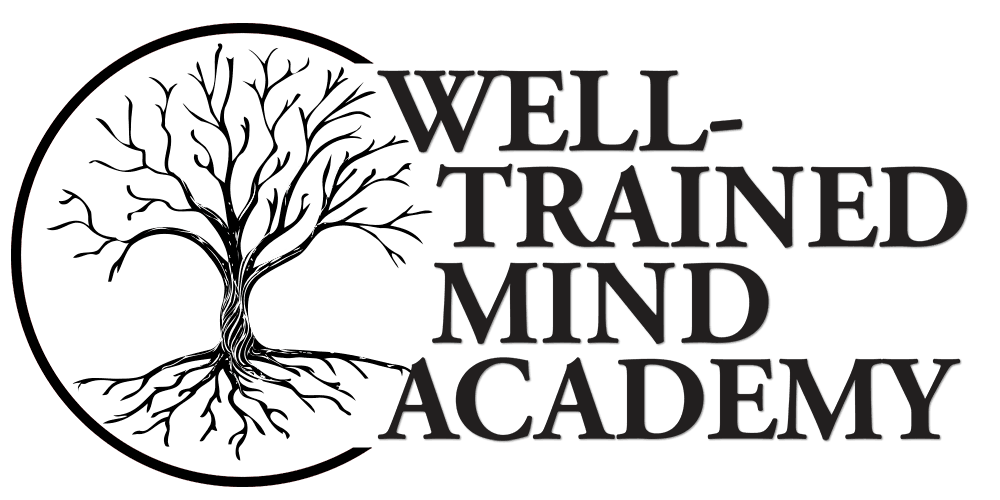Choosing Which Form of Class Instruction is Best for Your Student

Hi! I’m Courtney Ostaff. I am a homeschooling mom with two children, ages 11 and 5. I am also a longtime teacher — I’ve been teaching online since 1999 when I first started as a graduate assistant teaching basic computer skills to the general public through videoconferences. Over the last two decades, I’ve had experience in both taking and teaching courses online. In fact, I’ve been teaching with the Well-Trained Mind Academy since 2014!
Contents
Synchronous vs. Asynchronous Class Instruction
My own experiences taking online classes have shaped the way I both decide what to outsource when it comes to my children’s education and how I teach my own online classes. When I was in graduate school I took several online classes. Most of them were “asynchronous,” meaning that there was no live interaction with the instructor. We read texts on a given schedule, completed assignments with due dates, received feedback via the course management system, and sometimes interacted with other students in discussion boards.
Occasionally, I was lucky enough to take a “synchronous” course, meaning the class had live lecture sessions with an instructor. In the early days, teleconferences with accompanying slide decks were the norm (nothing like what you see in synchronous courses now!). As a graduate student in a synchronous class, I felt like I had a better way to ask questions, understand what the teacher wanted, and had less busywork. While asynchronous classes were helpful for when I was busy with other things, allowing me to work the class around my schedule, I always preferred to take synchronous classes.
Interaction with an Instructor is Key
I know that having some kind of a relationship with an instructor of a course is important. Even in the asynchronous courses, I felt like someone was there because there was a teacher grading my work. Asynchronous classes did not best fit my learning needs, but they were a better option than teaching myself with a textbook and an assignment packet. Typically, if I can read something and understand it, I don’t need help. But if I don’t understand it, I know reading the passage over and over isn’t going to change anything; I need someone to explain the concept to me. For example, just because I watch Bob Ross paint that doesn’t mean that I’m going to learn how to paint, even though he gives lovely, gentle instruction. I need someone to show me where I mess up and provide answers to non-standard questions.
Similarly, I wouldn’t just hand my children a book and expect them to teach themselves — even with DVD lessons, or pre-recorded videos they could access online. Having someone to answer their individual questions is the critical part of learning. Experienced educational professionals can make all the difference. My kids don’t know why they don’t understand something. Their instructor can teach them the subject, and figure out what the roads blocks to their success are. An experienced teacher has usually seen whatever issue my student has before and knows how to help.
Which Form of Class Instruction is Best?
As a homeschooling mom and educator, I think that teaching my children, face to face, is the most effective instruction. If I can’t do it, I try to replicate that one-on-one personalized instruction with a tutor. Of course, that can be very expensive, so when that’s not possible I try to find a small class led by an experienced instructor locally, or online. If I can’t get my child into a synchronous course, then the delayed (asynchronous) course is the next most effective form of class instruction — there’s a real person able to answer non-standard questions via email.
Another option to consider when putting together your curriculum is something called a MOOC – a Massive Open Online Course. MOOCs are open to general enrollments. Usually, they are found online as a series of videos and downloadable readings that the student can go through at their own pace. Sometimes you can pay for the work to be graded. The completion rates for MOOCs hover between 5-15%, with the pass rate at less than 10%. I saw that drop for myself — my live, online Algebra courses have a pass rate of about 80%, but when I was tapped to manage an online, self-paced Algebra program for a community college, my pass rates dropped to 20%. The only thing that changed is that students no longer had any deadlines.
Deciding Which Type of Class Instruction To Use for Your Student
All of these experiences have helped me decide which type of class instruction to use for homeschooling my children. If I can’t do it myself, and I can’t find someone to tutor, I’m going to look to live, online classes for outsourcing. If I can’t get my child into a live class, I’ll go for the delayed course. While I’m all about books and reading, I wouldn’t expect my child to teach themselves something out of a textbook without my assistance. If it’s just for fun, I might sign my child up for a MOOC, but I wouldn’t have any expectation that they’d learn something without outside support. And for all of you WTMA parents out there, I work hard to teach my WTMA classes the way I teach my own children — in a supportive and responsive small group setting.

